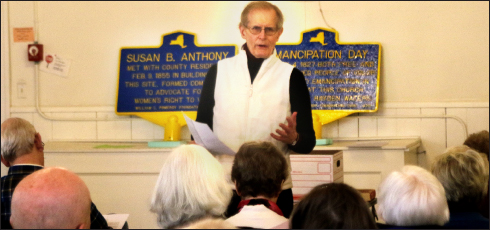MLK Day Mementos

2 Historic Markers
Commemorate Freedom
By JIM KEVLIN
COOPERSTOWN – Just in time for Martin Luther King Day, two state Historical Markers commemorating the United States’ march toward freedom – and Otsego County’s – have arrived at First Presbyterian Church here.
One marks Susan B. Anthony’s Feb. 9, 1855, appearance in a building where the church’s chapel is now. During her visit, she formed a local committee to advocate for the women’s right to vote.
The second commemorates July 4, 1827, when about 60 blacks gathered in the church, “with music and banners flying,” to celebrate the end of slavery in New York State.
The markers will be unveiled to the public at the church’s MLK Day celebration at 7 p.m. Monday, Jan. 21, at 25 Church St. and erected on the front lawn in the spring.
These were little-known events until
You have reached your limit of 3 free articles
To Continue Reading
Our hard-copy and online publications cover the news of Otsego County by putting the community back into the newspaper. We are funded entirely by advertising and subscriptions. With your support, we continue to offer local, independent reporting that is not influenced by commercial or political ties.

